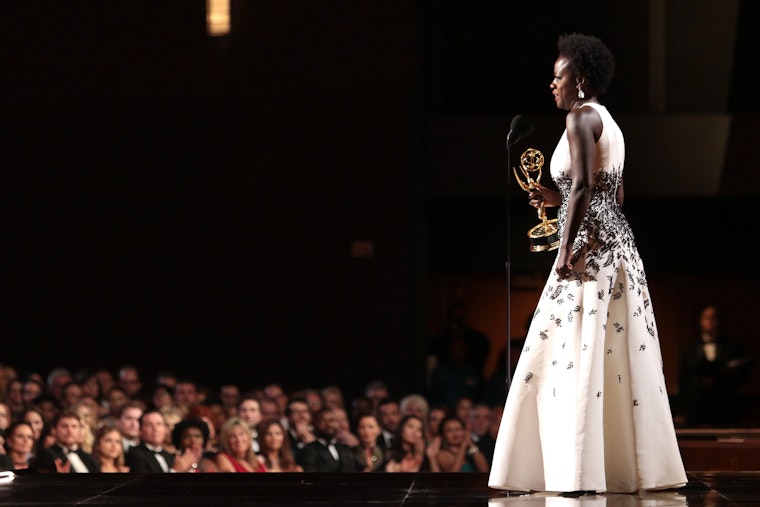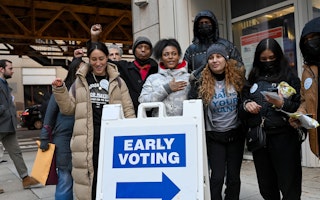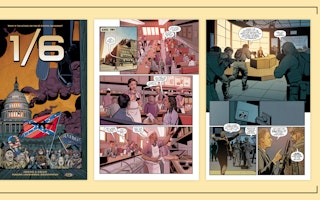“Artivism” Gets a 21st-Century Makeover
By Alan Jenkins

When Viola Davis took the stage earlier this month to accept an historic Emmy Award for Best Leading Actress in a Drama, she declared that “the only thing that separates women of color from anyone else is opportunity.”
Her poignant words were about racial and gender bias in Hollywood, but also about the larger struggle for equal opportunity in America. Judging from the overwhelming response on Twitter and other social media, her message reached and moved millions of people in the United States and around the world.
Arts and culture have long been central to social justice challenges in our country—sometimes hampering change through harmful stereotypes and barriers to diversity, but just as often forging a path for change. Indeed, artistic expression and popular culture have been an integral part of every successful movement for change in our country, and that is especially true of the struggle for racial justice.
Today is no different. In an era of rising art and activism around police bias, criminal justice reform, and equal opportunity, veteran “artivists” are being joined by new voices telling fresh stories and organizing for change.
To strengthen that intergenerational call to action, the Opportunity Agenda and the Open Society Foundations recently cosponsored a forum of inspiring and creative leaders with a shared social justice agenda. “Changing the Script: Media, Culture, and Black Lives” included veteran actor and activist Danny Glover, entertainment innovator Issa Rae (best known as the creator of The Misadventures of Awkward Black Girl), and social justice leader Patrisse Cullors, cocreator of Black Lives Matter. I had the privilege of moderating the discussion, which was far ranging, yet focused on progress.
Issa Rae explained how, frustrated with the Hollywood system, she bypassed it to find her voice and audience on YouTube. There, she had the freedom to tell genuine stories of the black experience that ring true—often hilariously so—but are wholly absent from mainstream media. Having shown that there is a hunger for new narratives, Rae is working to bring her vision to an even broader audience.
Danny Glover has been a distinguished actor and a committed activist for a quarter-century. In films like The Exonerated, Buffalo Soldiers, Queen, and Freedom Song, he has given life and passion to social justice struggles past and present. Alongside that powerful body of professional work, his personal activism has ranged from helping to establish one of the nation’s first ethnic studies programs, to disrupting colonialism and apartheid in Africa, to participating in the Occupy movement.
Again and again at the forum, Glover reminded the audience that progress—in both Hollywood and our broader society—occurs only through struggle. To emphasize the point, he described his continuing effort to make a film about Toussaint L’Ouverture, leader of the 18th-century slave revolt that led to Haitian independence.
Patrisse Cullors is best known for her brilliant use of social media to cocreate the Black Lives Matter movement. But she is also an artist, using theater techniques, visuals, audio, and dance to shine a light on state-induced trauma while charting a path towards healing. She spoke eloquently about the challenges and opportunities of the current moment, and how emerging leaders are increasingly linking culture and strategy.
For almost a decade, the Opportunity Agenda, too, has worked at the intersection of culture, communication, and advocacy. We have reframed debates and incubated creative projects that have helped to protect the human rights of immigrants, uphold fair housing and other civil rights, and expand opportunities for people returning to their communities from prison. Today, we are working within the movement that Cullors helped catalyze to spur transformative, lasting change in our criminal justice system.
Taken together, the forum speakers’ experiences highlighted the difference between 20th- and 21st-century activism, and its implications for the future. Whereas 20th-century movements were typically centralized, with highly visible leaders and formal organizations, today’s movements often feature horizontal networks with shared leadership, and regional hubs rather than national headquarters. And while last century’s movements necessarily aligned themselves with a nightly print and broadcast news cycle, today’s are creating and disseminating their own content in a 24-hour media culture.
News, entertainment, commentary, and organizing are increasingly integrated in a way that was unimaginable in past decades. And the ability to do an end-run around media gatekeepers is being bolstered by an increasingly diverse America in search of new narratives and images.
Today’s creative leaders are combining age-old strategies and long-held community values with new technologies and dynamic storytelling. And they are working together across generations to teach as well as learn. Our dynamic conversation this summer was one more meaningful step in that direction.
The Opportunity Agenda is a grantee of the Open Society Foundations.
Alan Jenkins is executive director of the Opportunity Agenda.


